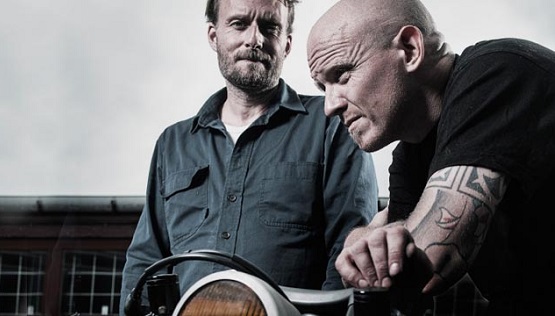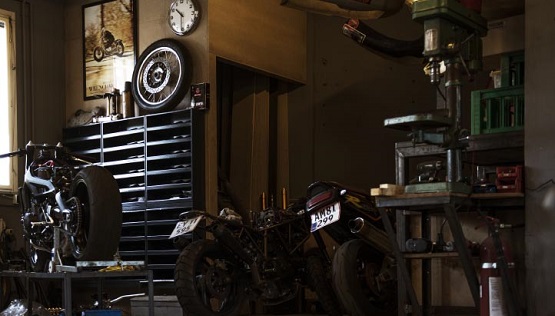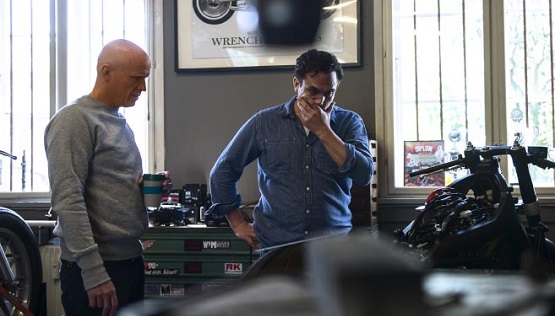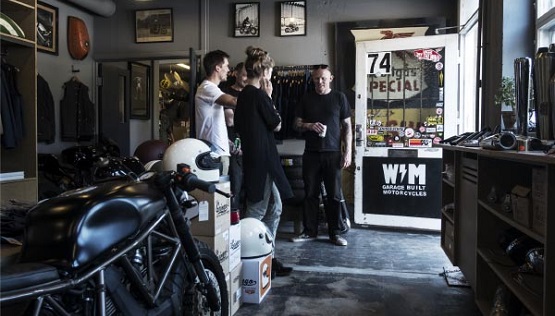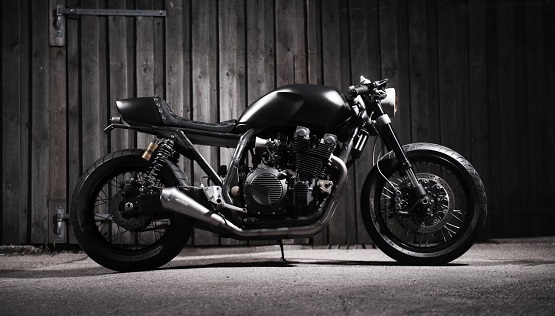- Home REN
- Home
-
Shop
-
Industries
- Processes
- Gases and Equipment
-
Services
-
Safety
-
Contact & Support
-
News & Media
- Agent Finder
Wrenchmonkees - Motorcycle magic from Denmark
They make wicked remakes of classic motorcycles, have their own clothing line and are lauded by the world’s largest motorcycle manufacturer. These are two thoughtful guys who pamper motorcycles in their den in Denmark, reviving the passion that originally gave birth to the bikes. They are Wrenchmonkees.
To view the video, you need to consent to YouTube cookies.
They have a special ability to find exactly what makes a bike special. As though they can identify the bike’s innermost spirit, with surgical precision and aesthetic perfectionism. Then they accentuate it so that the rest of us mortals can notice and enjoy it. They turn their gaze back to the bike. ‘If we fiddle with something here,’ explains Nicholas and points to the handlebars, ‘we will have to move some other things. This applies to all areas: lights, seat, height, etc. The lines on the bike must be clear.’ It is about making a plan and following it. Per squats down and taps lightly on one tire and then looks up. ‘If they have a deep tread, the bike should stick to the off-road style. Or you can decide to do the exact opposite. In other words, a style that is not actually a style. A bit like when you wear your Converse sneakers with a blazer to your cousin’s wedding, right?’ He laughs a little. But he is serious.
The Wrenchmonkees
PER NIELSENPer is the technical designer and one of the two founders of Wrenchmonkees. Since the late 1990s, his hobby has been to build his own motorcycles in various styles, together with Nicholas Bech. In 2008, they turned their passion into a profession, and Wrenchmonkees was officially born. When Per checks out of the workshop, he also plays drums in various Danish bands.
NICHOLAS BECH
Nicholas is the photographer behind Wrenchmonkees. Apart from being part of the design team together with Per, Nicholas is responsible for the welding and forging. He is also behind the ‘Monkee blog’, and he is constantly inspired by new, different underground subcultures and projects.
Check out the video! Visit Wrenchmonkees website.
Bare breasts framed
When you look around the workshop, you would not think this was a place that was recently visited by the world’s largest motorcycle manufacturer, Yamaha. Or that customers are standing in line to buy bikes, which are being transported as far away as Senegal, Dubai, Mauritius and even East Timor. But then again. There may be oil, welding equipment and tools all over the place, but there is a system to the mess and all the details have been considered. Even the ladies with the bare breasts are framed. There is no doubt that the raw and rustic expression is a cover for an extreme zeal, perfectionism, meticulousness, and high aesthetic ambitions, and the Danish lads are striving to be completely uncompromising. Something they are largely allowed to be. ‘We have had customers who gave us a complete carte blanche. We do not earn a lot off of it, but we are allowed to define a motorcycle that we like and to build it without many compromises,’ says Nicholas. Of course, they do generally have to be a little flexible when it comes to their ambitions. ‘It is, after all, also about what YOU like. And so we need to find some common ground.
Yamaha MT-09
The new project is a more modern bike. The base is a Yamaha MT-09. ‘We want to push the boundaries so that we are not copying ourselves. That goes without saying. We want to push the envelope a little. That much we can say. It shouldn’t be an over-the-top show bike, but we will try to do something different,’ they explain about their next project. They cannot unveil what they will do, but while they are standing and looking at the bike before them, they begin talking about their work process.
‘We try to get things to fit together by sticking to some simple rules, where we follow the lines of the motorcycle. We work live on the bike – purely visually,’ says Nicholas and continues, ‘Like we are doing now; and then we look at the bike’s lines. This could certainly be done using graphics software, but you cannot be certain it will work when you walk around it.’ When a giant like Yamaha comes along, you would think that the lads would have to follow a lot of guidelines, but actually they are allowed to play around. Normally, the customer does not decide everything. But then again. When you re-design motorcycles, live out your passion and are good at what you do because of your ambition and refusal to compromise, it can be difficult to listen to the customer’s requests. ‘It is still the customer's motorcycle, and we do not claim artistic freedom. We are, after all, just a small shop. The customer’s opinion is important, but we need to retain our integrity as well. I would say that we control 70-80% and the customer does the rest,’ says Per. ‘So in that way, we have probably become a bit snobbish,’ he says and laughs.
Motor oil in the blood and Kansas on the Body
Nicholas and Per are project initiators. Without a question. They see opportunities rather than limitations, so when the opportunity to release a clothing collection presented itself, they thought ‘Why not?’ ‘Kansas felt that it was a cool idea, and we thought it was exciting,’ says Per, who explains that they hope – and very much count on – that a lot will happen with the collection within the next couple of years. ‘Communities grow, festivals grow. People look cool and wear great clothing. We have a brand that people want to be identified with,’ says Per, underlining that they should always tend to their passion, which is the motorcycles. ‘The people around us must understand who we are. Yamaha, for example, are actually mega commercial, but we feel they are authentic. We need to be able to be happy with what we see in the mirror,’ Nicholas concludes. There is no doubt that even though the two wrenchmonkees may be world renowned, it is not the business plan that spurs them onwards – it’s passion.
